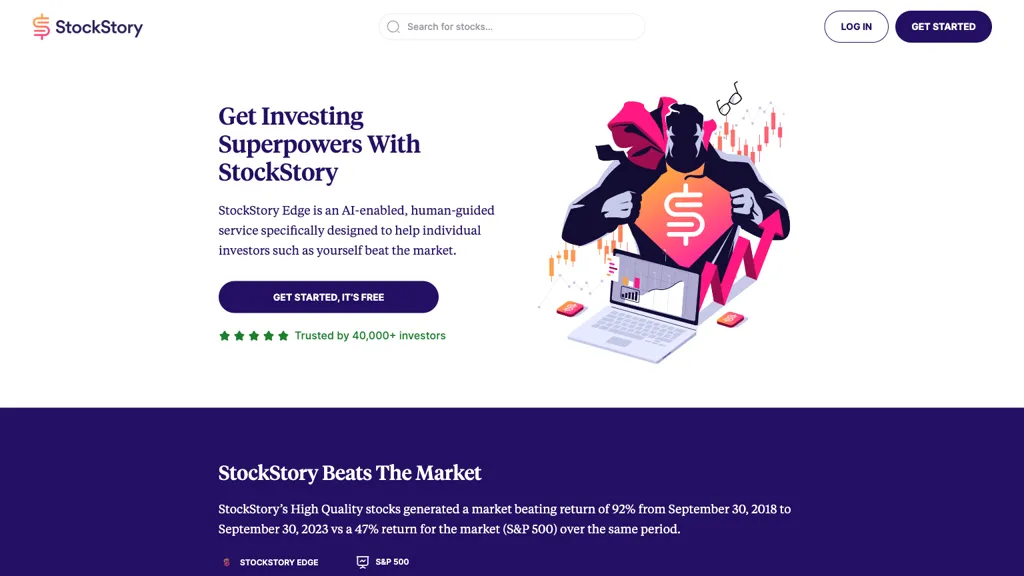20 Handy Tips For Picking AI Stock Analysis Platforms
Top 10 Tips On Assessing The User Interface And Experience Of Ai Analysis And Prediction Of Trading Platforms For StocksThe User Interface (UI) and User Experience (UX) of AI stock Predicting/Analyzing trading platforms are crucial to making sure that they are efficient, usable as well as overall satisfaction. An undesigned user interface may hinder decisions even if the AI models behind it are robust. Here are 10 top tips to evaluate the user interface on these platforms.
1. Examine the intuitiveness and ease of Use
Navigation: Ensure the platform is easy to navigate, with clearly defined menus, buttons and workflows.
Learning curve: Find out the speed at which new users be able to use and comprehend the platform with no any extensive training.
Consistency - Examine the patterns used on all platforms for uniformity (e.g., button colors and styles).
2. Look for customizability
Dashboard customization: Check if dashboards can be customized to display charts, data and metrics that are relevant for the user.
Flexibility in layout is essential: Make sure you can alter the arrangement and size of charts as well as widgets and tables.
Themes and preferences: Find out whether the platform has dark or light styles or other options for visuals.
3. Visualize Data
Quality of the chart - Make sure that the platform includes high-resolution interactive charts (e.g., line charts and candlestick charts), with zooming, panning and other features.
Visual clarity - Check to see if data are displayed clearly, using appropriate labels, legends or tooltips.
Real-time updates: Verify if visualizations change in real time to reflect market trends.
4. Test for Reactivity and Speed
Time to load: Make sure your platform loads fast even when dealing with large data sets or complicated calculations.
Real-time Performance: Find out if the platform has the ability to handle data feeds with no delay.
Cross-device Compatibility: Verify whether the platform works seamlessly with different devices (desktops or smartphones).
5. Evaluate the accessibility
Mobile app availability: Check whether the platform provides a mobile app with all the features needed for trading on the go.
Keyboard shortcuts. Ensure that your platform is compatible with keyboard shortcuts.
Accessibility features: Make sure that the platform complies with the accessibility requirements (e.g. screen reader support, high-contrast modes).
6. Examine the Search and Filter Functions
Search efficiency: Ensure the platform lets users swiftly search for the indices, stocks or any other asset.
Advanced filters: Determine if users can apply filters (e.g. by sector, market cap, performance metrics) to narrow down results.
Saved search: Verify whether the platform allows users save searches frequently used and filters.
7. Look for Alerts, Notifications and Other Information
Customizable alerts: Users are able to create alerts that are tailored to specific conditions.
Notification Delivery: Check to see if notifications can be delivered in multiple methods (e.g. via email, SMS or app notifications).
Timeliness: Verify that alerts are promptly and precisely sent.
8. Examine the possibility of integration with other tools
Broker integration: Ensure that the platform is fully integrated to your broker account to facilitate trade execution.
API access: Find out the API access for advanced users. the API to create their own customized tools or workflows.
Third-party platforms: Check to determine if your platform is able to be integrated with other programs (such as Excel, Google Sheets, or trading bots).
9. Look over the Help and Support Features as well as the Support Features.
Tutorials on boarding: See if the platform provides tutorials or walkthroughs to new users.
Help Center: Make sure the platform has a complete and well-organized help desk.
Customer service: Check to determine if the platform offers an efficient customer support.
10. Test Overall User Satisfaction
Feedback from users: Read research reviews and testimonials to gauge general user satisfaction with the platform's UX/UI.
Trial period: Make use of a free demo or trial to test the platform's usability.
How does the platform handle errors and edge cases?
Bonus Tips
Aesthetics are essential, a beautiful design can help improve user experience.
Performance under stress: Ensure that the platform is responsive and stable under conditions of extreme market volatility.
Check the community and forums to find out if there's an active forum or user group in which members can discuss tips and provide feedback.
Following these tips can help you evaluate the UI/UX of an AI analysis and stock prediction platforms to ensure they're user-friendly efficient, effective and compatible with your trading needs. A great UI/UX will enhance your ability make informed decisions, and to execute trades efficiently. Check out the recommended ai investment app hints for site examples including trading with ai, using ai to trade stocks, ai trading, ai for investing, best ai trading app, AI stocks, AI stocks, ai investment platform, ai for trading, ai investing platform and more.

Top 10 Tips For Assessing Transparency Of Ai-Based Platforms For Trading Stocks
Transparency is a factor to consider when evaluating AI platforms for prediction and trading in stocks. Transparency allows users to confirm predictions, be confident in the platform and understand how it works. Here are 10 suggestions on how to assess the authenticity of platforms.
1. AI Models explained in detail
TIP: Make sure that the platform explains the AI models and algorithms that are employed to create predictions.
What is the reason? Understanding the fundamental technologies can help users determine its credibility.
2. Data sources that are disclosed
Tips: Find out if the platform makes public its data sources (e.g. historic stock information or social media).
The platform uses reliable and extensive data, If you are familiar with the sources.
3. Backtesting Results of Performance Metrics and Performance Metrics
Tips: Make sure you search for transparent reporting on performance metrics such as accuracy rates and ROI, in addition to backtesting results.
This allows users to verify the effectiveness of the platform and its historical performance.
4. Real-time updates and notifications
Tips. Find out if your platform provides real-time data and alerts regarding trades or changes to the system, such as trading predictions.
The reason: Real-time transparency keeps users informed about every critical action.
5. Limitations and open communication
Tip: Check if the platform is openly discussing the risks and limitations of its predictions and trading strategies.
The reason: Recognizing your weaknesses can build trust with your customers and allow them to make decisions based on facts.
6. Raw Data Access for Users
Tip: Find out if you are able to access raw data, or the intermediate results AI models utilize.
What's the reason? Users can perform their own analysis and verify their predictions using raw data.
7. Transparency in Costs and Fees
TIP: Ensure that the platform clearly describes the fees, subscription costs, and potential hidden charges.
Transparent pricing minimizes the chance of unexpected costs and increases confidence.
8. Regular reporting and audits
Find out whether there are reports regularly issued on the platform or an external auditor is able to verify its operations and performance.
Independent verification is crucial as it increases the credibility of the process and guarantees accountability.
9. Predictions and Explainability
Tips: Find out about how the platform generates specific predictions or recommendations (e.g. features importance, decision trees).
Explainability is a tool that helps users to understand AI-driven decision making.
10. User Feedback and Support Channels
Tip - Check if the platform provides open ways to receive feedback and assistance from users, and whether they respond in a transparent manner to user complaints.
Why is that responsive communication demonstrates an interest in transparency and satisfaction of users.
Bonus Tip : Regulatory Compliance
Make sure the platform adheres to and is open about its conformity to financial regulations. This will improve transparency and credibility.
If you take the time to carefully examine these factors, it is possible to assess whether an AI-based stock prediction or trading system operates transparently. This lets you make informed decisions and build confidence in the capabilities of AI. Take a look at the recommended invest ai for blog info including free AI stock picker, can ai predict stock market, invest ai, AI stock price prediction, ai software stocks, ai software stocks, trading ai tool, best AI stock prediction, AI stock predictions, best stock prediction website and more.
